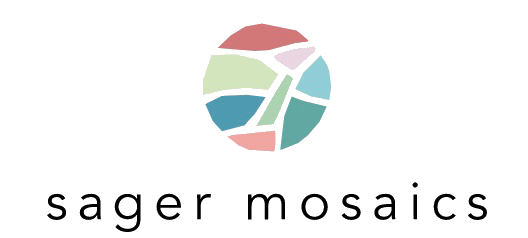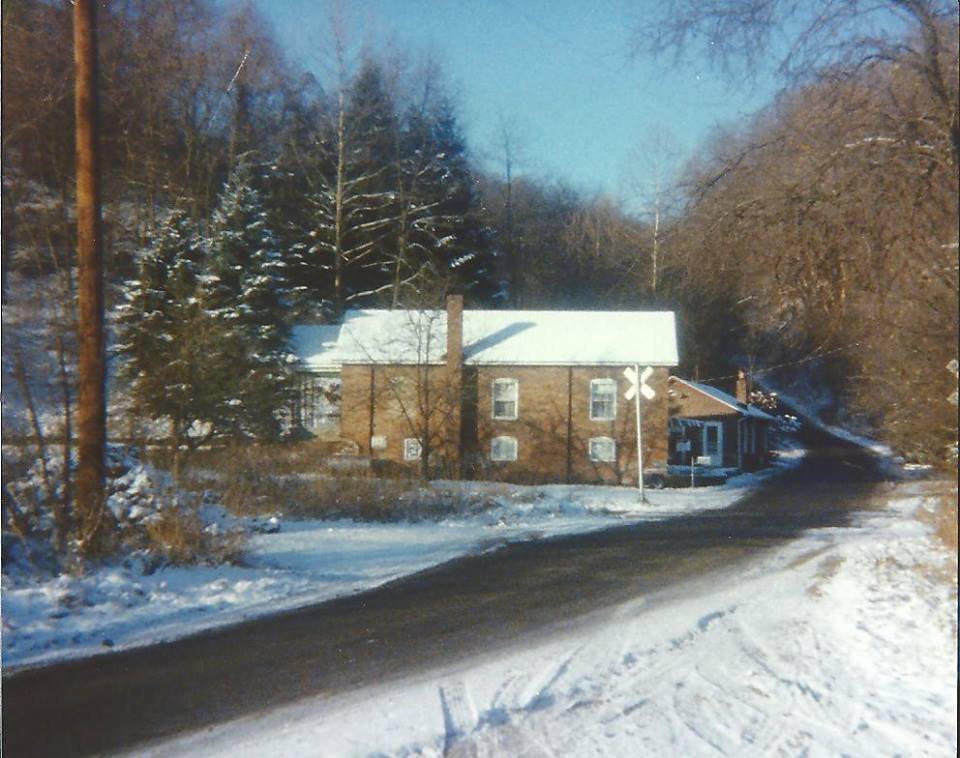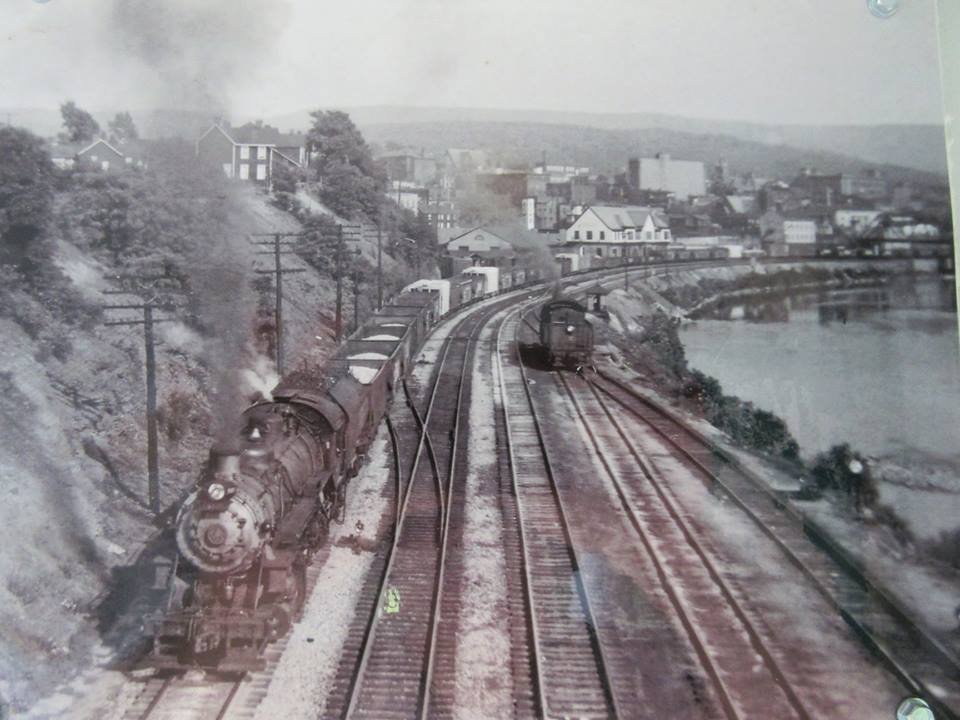Trains, trails, history and a WQED Documentary
Coal history in America is an animal unto itself and its chock full of stories, music, culture, tragedy, legacy and heartache.
The Ruins Project is a leftover from a time when the bike trails were still train tracks. When coal and steel and coke and iron ore were the raw materials that ran this country.
The Ruins, or what remains of Banning #2 coal mine in Fayette County, Pennsylvania was owned and operated by The Pittsburgh Coal Company in the height of coal’s heyday. Skip forward 50 or so odd years and The Great Allegheny Passage bike trail, which runs through Whitsett, now in it’s heyday, was built on the old lines of the Pittsburgh & Lake Erie railroad.
Banning # 2 coal mine in Whitsett, PA circa 1920 (Photo courtesy of the Whitsett Historical Society)
During its run, Banning #2 was one of the highest producing, hardest working little slope mines in the Youghiogheny River valley and at it’s height employed almost 700 men. But its been abandoned, forgotten, left to rust and crumble for close to 100 years. The woods have taken it back. In the spring, it is blanketed with delicate, rarely seen wildflowers that sometimes only last a day. Morels and hen-of- the-woods mushrooms pop up around its dead leaves in April and May. Moss has painted whole walls with carpets of electric green. It’s a sacred place that moves the heart in ways particular to each visitor.
But its not just these walls of concrete and brick that were abandoned. Whole generations of people were left behind when the mine closed. This little corner of the world was responsible for digging the coal that powered the industrial revolution. This is not an exaggeration. Pennsylvania coal, along with West Virginia and Kentucky supplied the raw material to make the steel that built the bridges and buildings, the museums and skyscrapers, in short, the infrastructures that we walk through every day.
Fayette County, maybe now more than ever, is the butt of off-color jokes. One in particular goes something like… “you know Fayette County used to be a part of West Virginia, but even they didn’t want it, so they shifted it up to Pennsylvania!” That joke manages to insult both West Virginia and my dear county in one very funny sentence. Such is the cross to bear of many a hillbilly town.
‘A good day above ground you’re lucky , A good day below ground you’re blessed,’ 19th-20th century coal miner saying. (Photo courtesy of A Coal Miner Family - Facebook)
I grew up here, along this edge of Appalachia and have always felt a fierce pride of place for my people and their beautifully imperfect landscapes. It never sat right with me, when I heard Fayette County be maligned and ridiculed, when I always saw so it clearly. It’s raw, rough and tough, earthy strength matches it’s people.
Miners at the mouth of Banning #2 Coal Mine in Whitsett, PA circa 1920. (Photo courtesy of The Whitsett Historical Society)
As an artist, I quickly saw the creative possibilities in these crumbling ruins that had lost their purpose. I often refer to The Ruins as my beast across the creek. It haunts my sleeping hours as it takes deep breaths and asks me the big questions. As a mosaic artist, the walls and rooms of concrete presented the perfect substrate for stone and glass. And lastly, but maybe most importantly, as a mosaic artist who comes from coal, I understand deeply how important it is to tell the story of coal with this perfect storm of ingredients. History, Art, and Nature; all wrapped together in a fascinating bundle of possibility.
The above 2-story building (currently my home) was the mining office for Banning #2 Coal Mine in Whitsett, PA beginning in 1902. The adjacent single story building (now gone) was the Lamp House & First Aide Station. (Photograph courtesy of Ronald W. Sheppard & Family for the Whitsett Historical Society)
Today, at the beginning of Year Four of this amazing adventure, I am making the leap into fundraising for The Ruins Project. Specifically, for one very special project that will begin as soon as the nights are above 50 degrees. Stevo Sadvary, the talented Pittsburgh mosaic artist is partnering with The Ruins Project to lead a team of volunteers in building a giant Steam locomotive on the longest wall. Read more about Stevo and his story here.
Vintage picture of a train leaving Connellsville, Pennsylvania. (Photo courtesy of Youghiogheny River Valley History)
This big black mosaic train will be six feet high and fifty feet long. It will be traveling towards Connellsville to deliver some imaginary coal to the imaginary coke ovens for eventual transport up to a furnace in Pittsburgh to be turned into steel. Imaginary, of course, because this train is long gone. But the shadow of The P&LE rail is still very much a part of our modern world in the form of the Great Allegheny Passage (GAP) bike trail. The trail still winds along the river valley, but now it carries people on two wheels looking for adventure. Our train will be the first installation to be highly visible from the trail. Part of our funding will be used to clear dead ash trees from the landscape.
Photo of the P&LE railroad in Whitsett, PA which is now the Great Allegheny Passage.
Why is it important to donate to this mosaic train in the woods?
It’s important because it represents something much bigger than my most thoughtful words can bring to life. It speaks of where we come from, and where we are going. The Ruins honors the past while celebrating what is yet to come. It is a teaching substrate, an American history lesson, a sacred place for imagining what you may have thought impossible. It defies one definition because it speaks to The Individual in all of us.
All funding for this venture will be directly used for support of the artists as they work, their materials, and landscape maintenance. We appreciate donations at any level. Donors of $100 or more will receive a free 2-person Ruins tour as well as getting your name permanently engraved into the train. If you can’t give today, please consider becoming a Ruins Champion by spreading the word about this unique fundraiser.
WQED documentary premiere
If you are interested in learning more about this former train track, now bike trail, “The Great Ride”, a documentary and multimedia initiative (featuring, in small part, The Ruins Project) can be viewed online at www.wqed.org/ride until March 31st, 2019.
Donations to The Ruins Project and Stevo Sadvary’s Ruin’s Locomotive can be made at gofundme.com/the-ruins-locomotive.
Sincerely,
Rachel Sager Mosaics & The Ruins Project
Sign up for the newsletter
You will receive one or two high quality blogs a month about anything from the state of contemporary mosaic, the power of dreams, the art of foraging to the latest updates on The Ruins.






